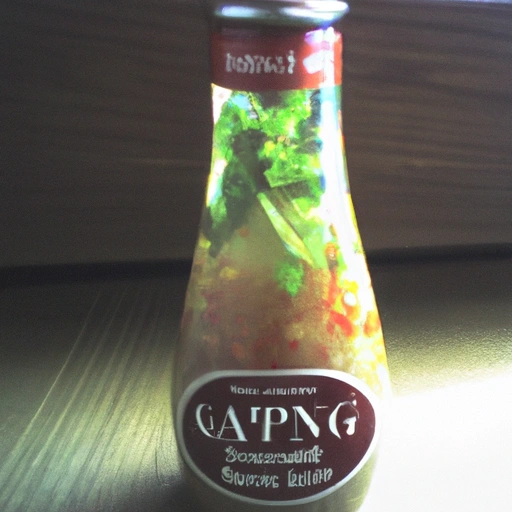Italian Dressing
Description

Italian Dressing is a vinaigrette-type condiment that’s a harmonious blend of vinegar, oil, and a medley of herbs and spices. It's commonly used to dress salads but is versatile enough to be used as a marinade or a seasoning in a variety of dishes. The zesty flavor of Italian Dressing comes from ingredients such as garlic, oregano, basil, and often a hint of red pepper flakes, providing a full-bodied, tangy taste with a touch of spiciness. In cooking, both the American customary units (cups, tablespoons, and teaspoons) and the European metric units (milliliters and grams) may be used, catering to a global audience interested in culinary pursuits.
Common uses
Italian Dressing is widely used to add zest to salads, as a marinade for meats, and to enhance the flavor of vegetables and sandwiches. It is a common sight in salad bars and is used in both home kitchens and restaurants.
Nutritional value
Calories
Typically, two tablespoons (about 30mL) of Italian Dressing contain approximately 70-80 calories.
Protein
Italian Dressing has a negligible amount of protein, usually less than 1 gram per serving.
Fat
The fat content can vary but generally ranges from 5 to 7 grams per serving, largely coming from the oil base.
Carbohydrates
Carbohydrates are present in small amounts, usually around 2-3 grams per serving, some of which may be from added sugars.
Vitamins
Vinegar and lemon juice in the dressing provide vitamin C, while herbs contribute other vitamins in trace amounts.
Minerals
Depending on the herbs and spices used, the dressing may contain minerals such as calcium, potassium, and magnesium in trace amounts.
Health benefits
Italian Dressing, when used in moderation, can provide the health benefits of its olive oil base, which is known for its heart-healthy monounsaturated fats. The herbs and spices can offer anti-inflammatory properties and antioxidants.
Potential risks
Overconsumption can lead to an excess intake of calories and fat. Some store-bought versions may contain high levels of sodium and added sugars, which should be consumed in moderation.
Common recipes
Italian Dressing is a staple in garden salads, pasta salads, and as a marinade for chicken, beef, and vegetables.
Cooking methods
While Italian Dressing is often used raw, it can also be used in cooking methods such as grilling, baking, and sautéing to add flavor to dishes.
Pairing with other ingredients
It pairs well with Mediterranean ingredients like olives, tomatoes, and feta cheese, as well as with American classics like a crisp iceberg wedge salad.
Summary
Italian Dressing is a versatile, flavorful condiment that adds a zesty kick to a variety of dishes. Its rich history and global appeal make it a favorite in many households, and its potential health benefits contribute to its popularity. However, like all foods, it should be used in moderation, especially when considering store-bought varieties with added sugars and sodium.